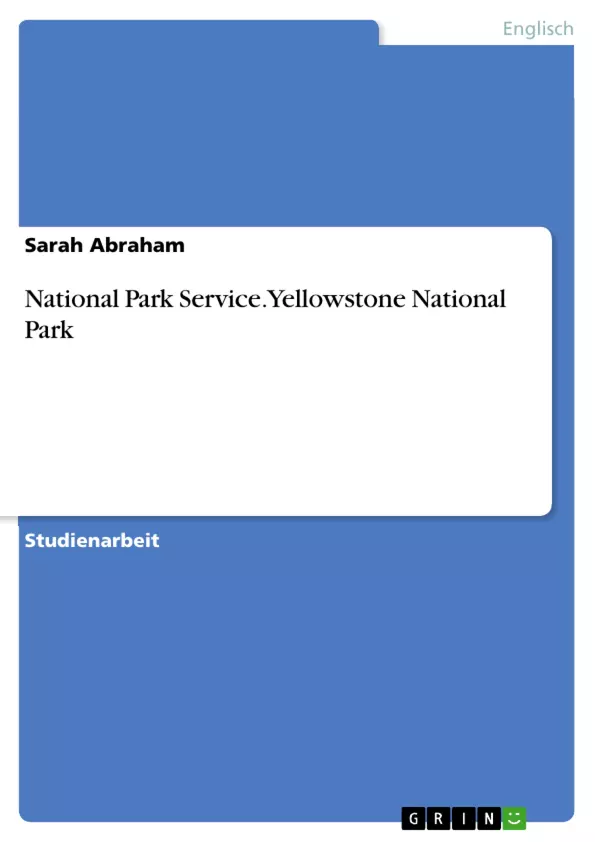According to the National Park Service, there are 59 national parks in the United States. No one is like another, each has distinctive features. But what is a national park, really? Therefore, the term "National Park“ gets clarified right in the first section. In the next section, the history of the North American National Parks is treated, the part of the continent in which the national park idea has its origin. To preserve the beauty of nature, however, it is imperative that you deal meaningfully with her.
Therefore, the next part is all about the National Park Service, which has set itself the goal of preserving and protecting the national parks. The second part is dedicated to the Yellowstone National Park, as the very first national park in the world. For the understanding of this unique area, it is necessary to provide a brief overview of the areas of geography and geology, volcanism, fauna and flora. The topic of tourism is not precisely explained, because in essence, the national parks are intended to serve as nature reserves and not as tourist attractions.
Inhaltsverzeichnis
- Preface
- National Park
- Definition National Park
- History
- National Park Service
- Yellowstone National Park
- Introduction
- Geography & Geology
- Volcanism
- Fauna
- Flora
- Closing Remarks
- Bibliography
- Table of Enclosures
Zielsetzung und Themenschwerpunkte
Der Text beschäftigt sich mit dem Konzept des Nationalparks und verwendet das Beispiel des Yellowstone National Parks, um dieses Konzept zu veranschaulichen. Ziel des Textes ist es, die Bedeutung von Nationalparks als Naturreservate und deren Geschichte und Entwicklung zu erläutern. Der Fokus liegt dabei insbesondere auf der Bedeutung des Yellowstone National Parks als erster Nationalpark der Welt.
- Definition und Entstehung des Nationalpark-Konzepts
- Die Rolle des National Park Service bei der Bewahrung von Nationalparks
- Die einzigartige Geographie und Geologie des Yellowstone National Parks
- Die Bedeutung des Yellowstone National Parks als Naturreservat
- Die Bedeutung des Yellowstone National Parks als Touristenattraktion
Zusammenfassung der Kapitel
Die Einleitung definiert den Begriff des Nationalparks und beleuchtet die Bedeutung von Nationalparks als Naturreservate. Der zweite Abschnitt befasst sich mit der Entstehung der Nationalpark-Idee, den frühen Anfängen und den Entwicklungen im Laufe der Geschichte. Im dritten Abschnitt wird die National Park Service als Institution vorgestellt, die für die Bewahrung der Nationalparks zuständig ist. Das vierte Kapitel widmet sich dem Yellowstone National Park und beschreibt dessen Einführung, Geographie, Geologie, Vulkanismus, Fauna und Flora.
Schlüsselwörter
Der Text beschäftigt sich mit den Themen Nationalparks, Naturreservate, Geschichte, National Park Service, Yellowstone National Park, Geographie, Geologie, Vulkanismus, Fauna, Flora und Tourismus. Weitere wichtige Schlüsselwörter sind: IUCN, Naturschutz, nachhaltige Entwicklung, Biodiversität.
- Quote paper
- Sarah Abraham (Author), 2014, National Park Service. Yellowstone National Park, Munich, GRIN Verlag, https://www.grin.com/document/345024



